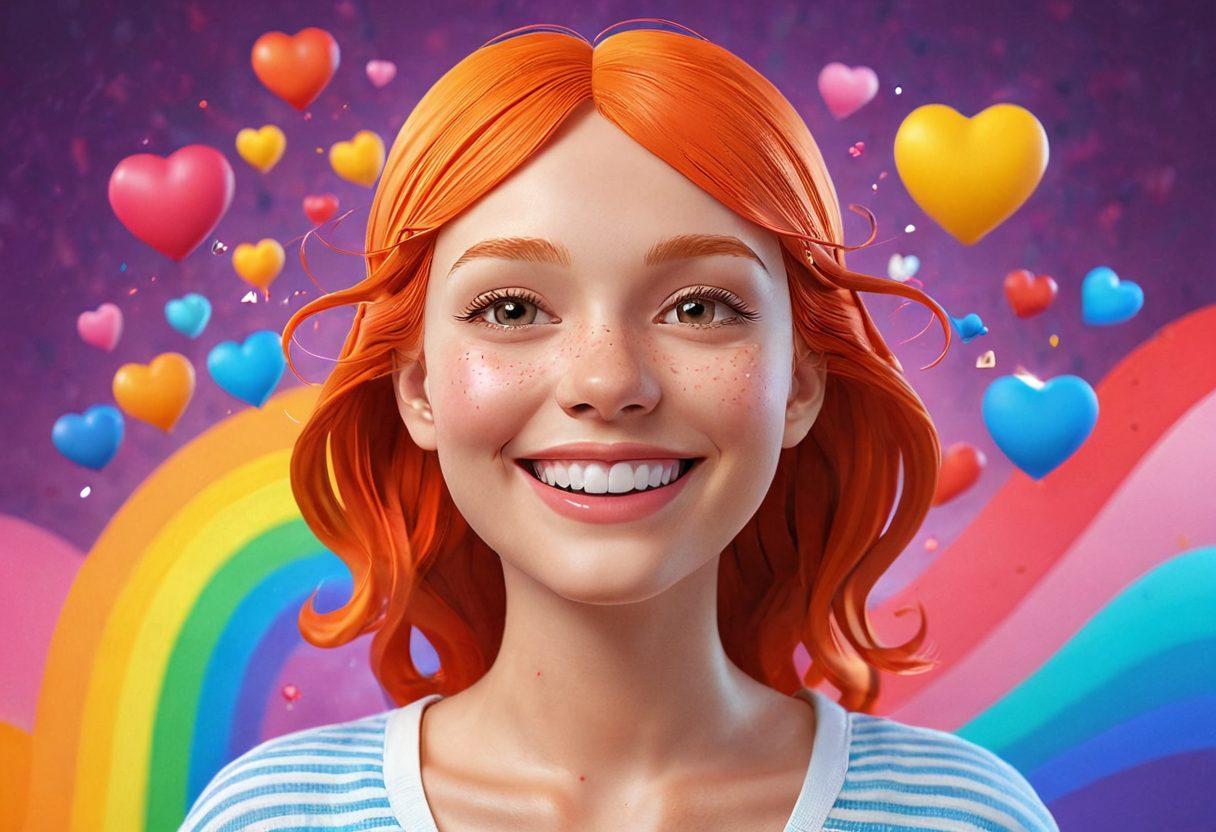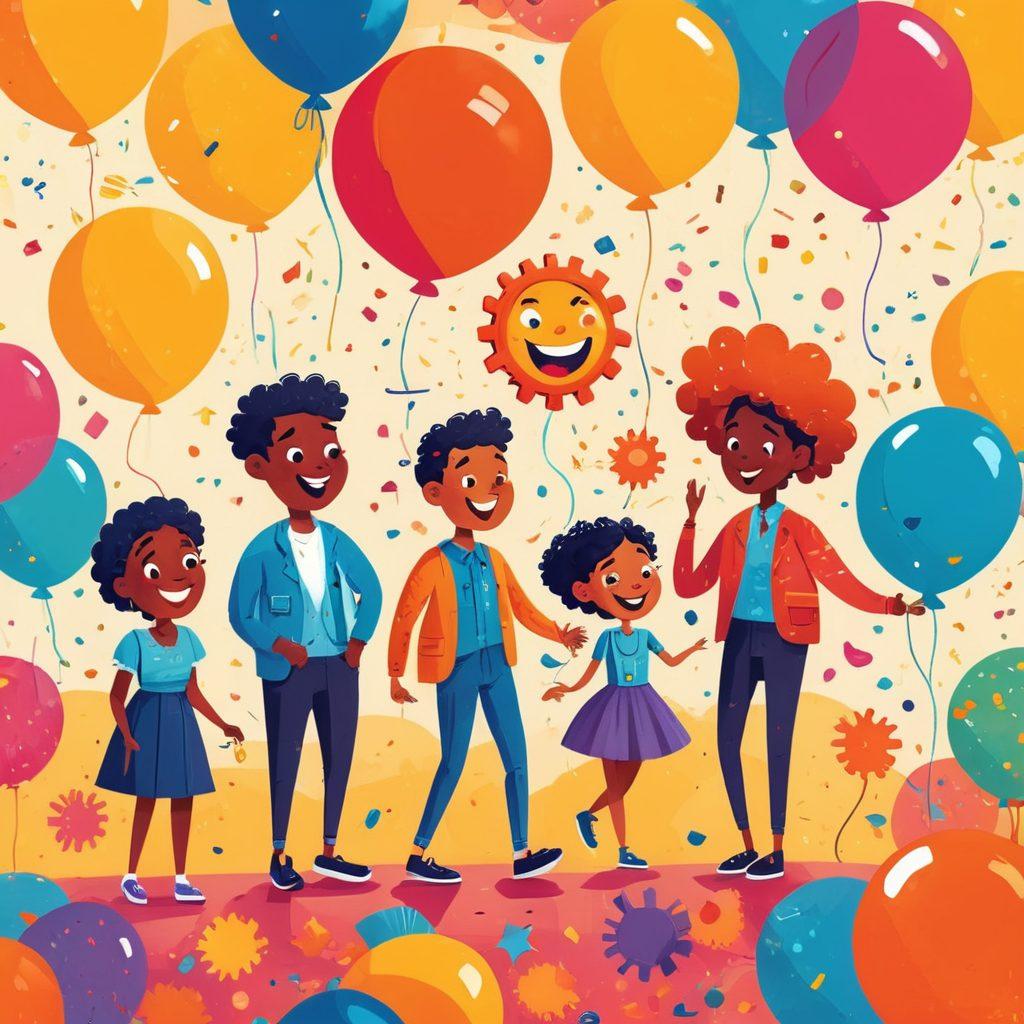Unleashing Joy: How 3D Character Models Enhance Well-Being Through Emotion Analysis
Have you ever experienced that illuminating moment when a simple image or character can instantly elevate your mood? The captivating world of 3D character models brings with it the power to transform emotions in ways we never thought possible. By blending artistry with cutting-edge technology, these happy characters provide not just entertainment, but also a pathway to enhancing our well-being. The journey into understanding how 3D character models positively influence our emotional states is an exhilarating one. It opens the door to questions like: How can a virtual character leave us feeling elated or blissful?
Imagine walking through a vibrant virtual world filled with cheerful and animated characters, each designed meticulously using advanced modeling techniques. These creations don’t just exist for aesthetic pleasure; they evoke feelings of joy and satisfaction. Research shows that when we engage with animated models that resonate with our emotions, we are more likely to adopt a positive mindset. This raises an important question: How can we harness the power of these character representations to enhance our daily lives?
Incorporating 3D character models into various aspects of life has proven to be rewarding. Think about educational platforms using these animated models to teach children about emotions or businesses employing them for performance evaluation and employee engagement. These applications not only make learning and training more interactive but also lead to a more optimistic atmosphere. The interaction between users and happy characters fosters mood enhancement and helps reinforce emotions like joy and delight. What if we could infuse our workplaces and homes with more of these uplifting experiences?
The impact of emotion analysis on modeling these characters cannot be understated. By understanding the intricacies of how emotions like pleasure and celebration interplay, designers are creating 3D models that resonate on a deeper level. The result? A pool of blissful, animated figures that encourage users to express their feelings candidly. This transformation isn’t just confined to screens; it spills over into our real lives, shaping how we connect with one another. Can you think of a situation where a cheerful virtual friend brought a smile to your face during a tough day?
As we embrace the future of virtual modeling, we should continuously explore new methods to leverage these 3D character models. Whether in video games, wellness apps, or even therapy platforms, the opportunities are limitless. So, how can you incorporate these joyful characters into your life for enhanced well-being? Maybe start by seeking apps with positive mood modeling features, or even explore creating your character for self-expression. In the end, the journey of emotion transformation through digital characters is not just a trend; it's a movement towards a more joyful and content existence, one delightful model at a time.
From Pixels to Positivity: How Animated Models Foster Joy and Well-Being
In a world where digital interactions are becoming predominant, the magic of 3D character models is soaring to new heights. How often have you found yourself chuckling at a cheerful character or feeling uplifted by elated animations? From video games to interactive marketing, these happy characters wield the power of joy, echoing our deepest emotions and catalyzing positive mental well-being. Through innovative emotion analysis and advanced modeling techniques, the virtual realm not only entertains us but also encourages us to adopt a more optimistic and cheerful outlook on life. How can something as simple as animated models contribute to our overall happiness? Let’s dive deeper into this fascinating intersection of art, technology, and emotional well-being.
The charm of animated models lies in their ability to communicate feelings without uttering a single word. Think about it: when a character smiles, it invites us into a realm of joy. They become more than just visual representations; they are digital messengers of blissful states. Researchers have found that these character representations, when designed effectively, can significantly enhance our mood. When we engage with cheerful characters, our own emotions can shift towards the pleasurable, making the choice of how a character looks and behaves crucial for performance evaluation and mood modeling. Have you ever noticed how a simple smile can change the entire atmosphere of a scene?
Joyful interactions with 3D characters stimulate not just our minds but our entire well-being. You may recall the last time a funny animated character made you laugh or a delightful scene sent a wave of satisfaction through you. These instances are not mere coincidences; they stem from the sophisticated integration of emotion analysis within virtual modeling. Designers carefully craft these animated models to elicit specific emotions. Picture an elated character jumping with glee—it’s hard not to feel a twinge of happiness in response! The question then arises: how can we further leverage this emotion-driven design to promote a positive mindset not only in entertainment but in everyday life?
Real-life applications of mood enhancement through character representation are endless. Businesses and educators alike are harnessing the charm of animated models to foster environments that inspire creativity and well-being. For instance, in virtual therapies, happy characters can help individuals confront difficult feelings or situations. Similarly, in a learning environment, cheerful animation can make challenging topics more accessible and enjoyable. These characters stir a sense of delight and curiosity while encouraging an optimistic approach to problem-solving. How can we apply this powerful tool in our daily routines to elevate our spirits, both in our personal and professional lives?
In conclusion, the digital landscape is teeming with potential when we embrace the joy that 3D character models can bring. By implementing effective modeling techniques that prioritize emotional resonance, we can foster not just entertainment but deep, meaningful connections that contribute to our overall sense of well-being. As we traverse life's challenges, let us seek out moments that bring a smile, whether through animated characters or any other joyful experience. Are you ready to embark on a journey where happiness comes alive, pixel by pixel, and redefine your approach to joy? Embrace the cheerful side of life and let these joyful animations inspire your days!
Unlocking Cheerfulness: The Role of Emotion Analysis in Character Representation
In a world teeming with challenges and uncertainties, the pursuit of joy and well-being has never felt more crucial. One captivating way to enhance our emotional landscapes is through the innovative use of 3D character models, which are now paving the way for deeper emotional connections. Imagine if cheerful animated characters could help us tap into our own feelings—what if creating these happy characters could unlock elated states of mind, leading to a more blissful existence? By harnessing emotion analysis and advanced modeling techniques, we find ourselves at the intersection of technology and emotional intelligence, ready to dive into the impact that these animated models have on our mood enhancement.
The essence of a cheerful character isn’t just in its bright colors or catchy animations; it lies in the intricate emotion analysis behind its design. By carefully evaluating a character’s performance, creators can infuse their animated models with genuine expressions and body language that resonate with viewers' hearts. Have you ever found yourself smiling at a character's antics, feeling a wave of satisfaction wash over you? This phenomenon illustrates how well-executed character representation can evoke pleasure and uplift our spirits. When a character embodies joy, we become more optimistic about ourselves and our surroundings—can you think of a time when a character brought a sense of delight to your day?
Effective mood modeling requires a keen understanding of human emotions, which opens the door for artists and developers alike to create characters that reflect a positive mindset. This ongoing relationship between emotion analysis and 3D character models sheds light on how we can forge deeper connections with content. By utilizing virtual modeling, creators can convey sentiments that are not only visually appealing but also emotionally engaging. What can we learn from these animated personalities that might spill over into our own lives? By witnessing their journey towards happiness, we might find inspiration to seek our own paths toward joy and fulfillment.
Let’s consider how the design of these characters feeds into our real-life experiences. Research shows that exposure to cheerful animated models can lead to improved well-being; their joyful nature has the power to influence our mood positively. Whether it’s a beloved cartoon character or a dynamic video game avatar, we often project our emotions onto these figures, which can lead to mood enhancements. Have you ever noticed how your stress melts away after watching a heartwarming animated film? These moments of blissful escape reinforce the importance of nurturing our emotions through thoughtful character representation.
As we embrace the delightful possibilities of 3D character models, let’s reflect on how we can incorporate their positive traits into our daily lives. By aligning our mindsets with the values these characters represent, we can harness their cheerfulness to cultivate a more joyful atmosphere around us. Practicing gratitude, focusing on our passions, and encouraging our loved ones to express their feelings can help create the same sense of well-being that animated models evoke. In this journey towards embracing happiness, we can all set out to become the heroes of our own stories, radiating joy just like the animated characters we adore. What small changes can you make today to uplift not just your mood, but also the moods of those around you?


